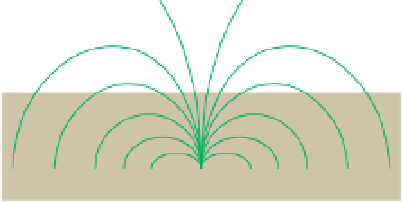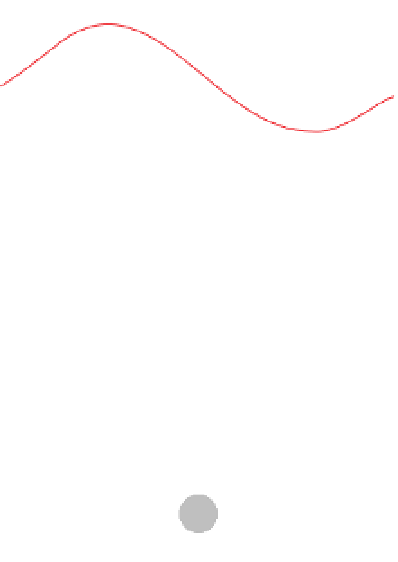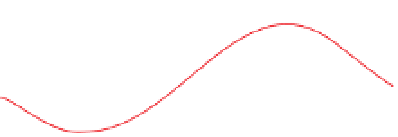Geoscience Reference
In-Depth Information
a)
b)
c)
d)
S
N
S
N
S
N
Geomagnetic
field
Geomagnetic
field
TMI
TMI
TMI
TMI
Geomagnetic
field
Geomagnetic
field
Res
A
Res
B
Res
C
Res
D
Res
E
Res
F
Re
s
G
Res
A
Res
B
Res
C
Res
D
Res
E
Res
F
F
Res
G
Res
A
Res
B
Res
C
Res
D
Res
E
Res
F
Res
G
Res
A
Res
B
Res
C
Res
D
Res
E
Res
F
Re
s
G
A
B
C
D
E
F
G
A
B
C
D
E
G
A
B
C
D
E
F
G
A
B
C
D
E
F
G
Body's
field
Res
C
Res
D
Res
D
Res
E
Res
D
Res
F
Res
B
Res
F
Res
B
Res
B
Res
B
Res
C
Res
F
Res
F
Res
C
Res
E
Res
E
Res
A
Res
A
Res
G
Res
A
Res
E
Res
G
Res
G
Res
C
Res
D
Res
A
Res
G
S
N
S
N
S
N
G
F
B
A
C
D
E
G
A
B
C
E
F
A
B
C
D
E
F
G
A
B
C
D
E
F
G
D
Source
Depth
Depth
Depth
Depth
Equator
Mid-latitude southern hemisphere
North pole
Mid-latitude northern hemisphere
Induced magnetism
Source's field at the surface
Resultant magnetic field
Geomagnetic field
Figure 3.9
Schematic illustrations of the induced magnetic fields of a spherical source. (a) At the magnetic north pole, (b) mid-latitude in the northern hemisphere, (c) the magnetic equator and
(d) mid-latitude in the southern hemisphere. Shown are the variations in TMI along the principal profile over the source resulting from vector addition of the Earth
'
s (geomagnetic) field with that
of the source, and the induced magnetic field. The geomagnetic field strength is many times greater than that of the source, but has been reduced here for clarity.





























































































































































































































































































































































































Search WWH ::

Custom Search